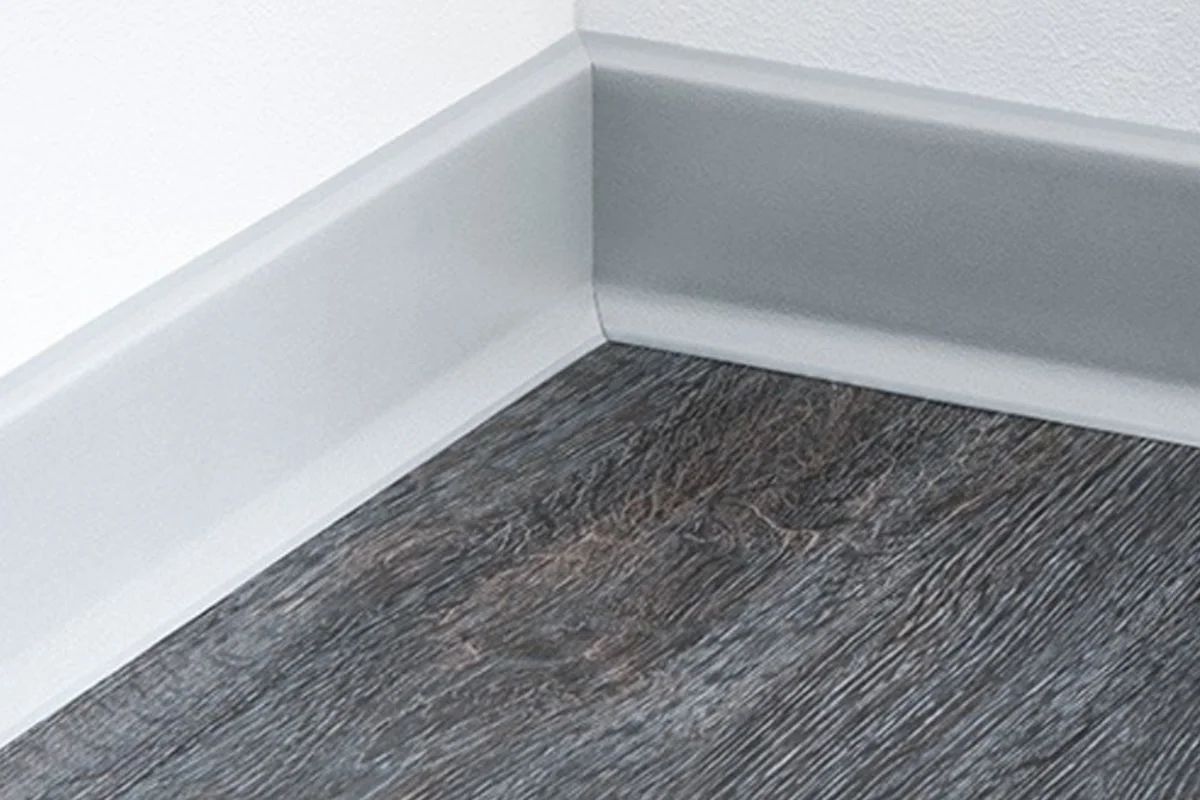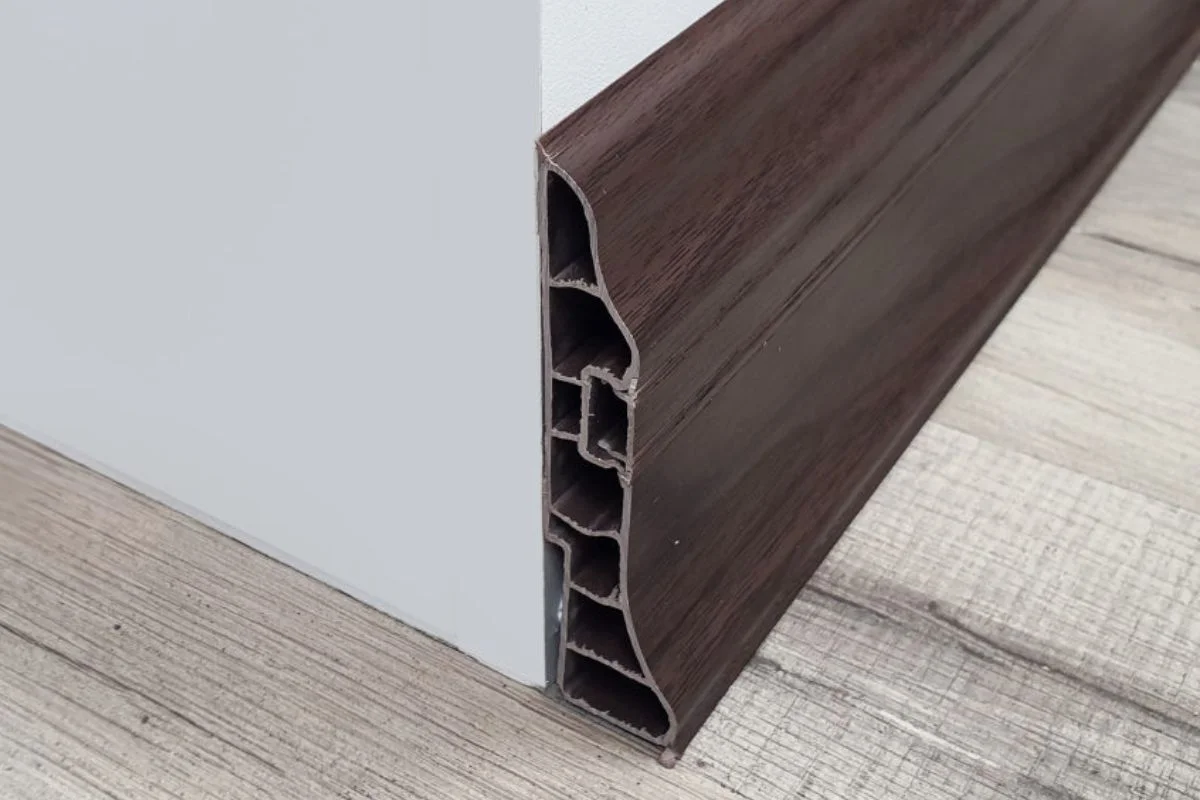
PVC skirting, often an overlooked element in home design, plays a crucial role in providing a polished and finished look to any room. This often underestimated feature not only adds aesthetic appeal but also serves practical purposes, such as covering gaps between the floor and wall, concealing cables, and protecting walls from damage. As a versatile and cost-effective option, PVC skirting has gained popularity among homeowners for its ability to enhance the overall appearance of interior spaces while offering durability and ease of maintenance.
In this comprehensive guide to PVC skirting, we’ll explore everything you need to know about this stylish and practical addition to your home. From its benefits and considerations to choosing the right style and installation tips, we’ll provide you with the knowledge and insights to make informed decisions for your interior design projects.
Join us as we delve into the world of PVC skirting, uncovering its versatility, functionality, and design possibilities. Whether you’re renovating your entire home or simply looking to add the finishing touches to a room, PVC skirting offers a simple yet effective solution for achieving a polished and cohesive look. Let’s embark on a journey through the complete guide to PVC skirting and discover how this underrated feature can transform your home into a stylish and inviting space.
Brief overview of PVC skirtings
PVC skirtings are an essential component of interior design, serving as a finishing touch between the floor and the wall. Made from Polyvinyl Chloride, a durable and versatile material, PVC skirtings offer numerous benefits for both residential and commercial spaces. They are resistant to moisture, scratches, and damage, making them ideal for high-traffic areas like hallways and kitchens. Additionally, PVC skirtings come in a variety of profiles, colors, and finishes, allowing for endless customization to match any decor style. Their affordability, ease of installation, and low maintenance requirements make PVC skirtings a popular choice for modern interiors seeking a combination of practicality and aesthetics.
Importance of PVC skirtings s in interior design
PVC skirtings play a crucial role in interior design by providing a polished and cohesive look to any room. Here are some key reasons why PVC skirtings are important:
Finishing Touch: PVC skirtings serve as a finishing touch to a room’s decor by bridging the gap between the floor and the wall. This helps create a seamless transition and adds a sense of completeness to the space.
Protection: Skirtings help protect the bottom of the wall from damage caused by furniture, vacuum cleaners, and foot traffic. They act as a barrier, preventing scratches, dents, and scuff marks on the wall’s surface.
Concealment: PVC skirtings conceal unsightly gaps or imperfections between the floor and the wall, providing a neat and tidy appearance. They can hide cables, wires, and uneven flooring edges, resulting in a cleaner aesthetic.
Enhanced Visual Appeal: By covering the junction between the floor and the wall, PVC skirtings contribute to the overall visual appeal of a room. They come in various styles, colors, and finishes, allowing homeowners to choose options that complement their decor and add character to the space.
Versatility: PVC skirtings are available in a wide range of profiles and designs, making them suitable for different interior styles, from traditional to modern. This versatility allows for creativity and customization in interior design projects.
Maintenance: PVC skirtings are easy to clean and maintain, requiring minimal effort to keep them looking fresh and new. Unlike other materials, PVC skirtings are resistant to moisture, rot, and insect damage, making them a durable and long-lasting choice for interior spaces.
Definition and composition of PVC Skirtings
PVC skirtings are trimmings or moldings made from Polyvinyl Chloride (PVC), a synthetic thermoplastic polymer. PVC is composed of vinyl chloride monomers, which are polymerized to form long chains of molecules. These chains can be manipulated to create a wide range of products, including skirtings.
The composition of PVC skirtings typically includes PVC resin as the primary material, along with additives such as plasticizers, stabilizers, and pigments. These additives enhance the properties of PVC, making it flexible, durable, and resistant to various environmental factors.
Plasticizers are added to PVC to increase its flexibility and ease of molding, allowing PVC skirtings to be formed into different shapes and profiles. Stabilizers are incorporated to improve the material’s resistance to heat, light, and weathering, ensuring that PVC skirtings maintain their structural integrity over time. Pigments are used to color the PVC skirtings, offering a wide range of options to match various interior design schemes.
Overall, the composition of PVC skirtings is carefully engineered to provide a balance of strength, flexibility, and aesthetic appeal, making them a versatile and practical choice for finishing interior spaces.
Advantages Disadvantages of PVC Skirtings
Advantages of PVC Skirtings:
Durability: PVC skirtings are highly durable and resistant to moisture, rot, and insect damage, making them ideal for use in high-traffic areas and humid environments such as bathrooms and kitchens.
Easy Maintenance: PVC skirtings are easy to clean and maintain. They can be wiped down with a damp cloth or mild detergent to remove dust, dirt, and stains, requiring minimal effort to keep them looking fresh and new.
Cost-Effectiveness: PVC skirtings are typically more affordable than other materials such as wood or MDF (Medium-Density Fiberboard), making them a cost-effective option for homeowners on a budget.
Versatility: PVC skirtings come in a wide range of profiles, colors, and finishes, allowing for endless customization to match any decor style. They can be easily painted or stained to achieve the desired look, providing flexibility in design choices.
Easy Installation: PVC skirtings are lightweight and easy to handle, making them simple to install for DIY enthusiasts or professional contractors. They can be cut to size with basic tools and installed using adhesive or nails, saving time and labor costs.
Disadvantages of PVC Skirtings:
Limited Aesthetic Appeal: While PVC skirtings offer versatility in terms of color and finish, some homeowners may prefer the natural look and feel of wood or other materials. PVC skirtings may not always replicate the authentic appearance of traditional materials.
Vulnerability to Heat: PVC skirtings may warp or deform when exposed to high temperatures, such as those generated by radiant floor heating systems or direct sunlight. Care should be taken to avoid installing PVC skirtings in areas prone to extreme heat.
Environmental Concerns: PVC is a synthetic material derived from petroleum, and its production process can have environmental impacts. Additionally, PVC skirtings may not be biodegradable and can contribute to plastic waste if not properly disposed of at the end of their lifespan.
Limited Structural Strength: While PVC skirtings are durable and resistant to damage, they may not provide the same level of structural strength as materials like wood or metal. They may be more prone to denting or breaking under heavy impacts.
Step-by-step guide to installing PVC skirtings
Installing PVC skirtings is a straightforward process that can be accomplished with basic tools and materials. Here’s a step-by-step guide to help you through the installation:
Gather Materials and Tools:
- PVC skirtings
- Measuring tape
- Pencil
- Miter saw or hand saw
- Adhesive or nails
- Caulk gun (if using adhesive)
- Level
- Safety goggles and gloves
Prepare the Surface:
- Ensure that the walls and floors are clean, dry, and free of any debris.
- If necessary, remove any existing skirtings or trim.
Measure and Cut the Skirtings:
- Measure the length of each wall where the skirtings will be installed.
- Using a miter saw or hand saw, cut the PVC skirtings to the appropriate length at a 45-degree angle for corner joints.
Apply Adhesive or Install Nails:
- Apply a thin bead of adhesive along the back of the skirtings, if using adhesive. Alternatively, you can use nails to secure the skirtings to the wall.
- Place the skirtings against the wall, ensuring they are level and flush with the floor.
Secure the Skirtings:
- Press the skirtings firmly against the wall to ensure a strong bond with the adhesive or drive nails through the skirtings into the wall studs.
- Repeat the process for each section of skirtings, making sure to align the joints properly at corners.
Fill Gaps and Caulk Joints:
- Use caulk to fill any gaps between the skirtings and the wall or floor.
- Smooth the caulk with a damp cloth or finger to create a clean finish.
Allow Time to Dry:
- If using adhesive, allow sufficient time for it to dry and bond the skirtings to the wall.
- Follow the manufacturer’s instructions for the specific adhesive used.
Finishing Touches:
- Once the skirtings are securely in place and the adhesive is dry, remove any excess caulk or adhesive residue.
- Touch up the paint or finish as needed to ensure a seamless look.
Clean Up:
- Dispose of any leftover materials and clean up the work area.
Enjoy Your Newly Installed Skirtings:
- Step back and admire your handiwork! Your PVC skirtings are now installed and ready to enhance the appearance of your interior spaces.
Maintenance and Care
Maintenance and care for PVC skirtings are relatively simple and straightforward, requiring minimal effort to keep them looking clean and well-maintained. Here are some tips to help you maintain your PVC skirtings:
Regular Cleaning: Dust and dirt can accumulate on PVC skirtings over time, so it’s essential to clean them regularly. Simply wipe down the skirtings with a damp cloth or sponge to remove surface debris. For stubborn stains, you can use a mild detergent solution and water to gently scrub the affected areas.
Avoid Harsh Chemicals: When cleaning PVC skirtings, avoid using harsh chemicals or abrasive cleaners, as they can damage the surface of the material. Stick to mild cleaning solutions and non-abrasive cleaning tools to preserve the integrity of the PVC.
Preventative Measures: To prevent scratches and dents, avoid dragging heavy furniture or objects across the skirtings. Use furniture pads or felt protectors on the bottom of furniture legs to reduce the risk of damage to the skirtings.
Protect from Heat: PVC skirtings can be sensitive to heat, so it’s essential to protect them from direct sunlight and sources of high heat, such as radiators or heating vents. Excessive heat exposure can cause warping or distortion of the PVC material.
Addressing Stains: If you notice any stubborn stains or marks on your PVC skirtings, you can use a mild solvent or PVC cleaner to spot-clean the affected areas. Be sure to test the cleaner on a small, inconspicuous area first to ensure compatibility with the PVC material.
Inspect for Damage: Periodically inspect your PVC skirtings for any signs of damage, such as cracks, chips, or discoloration. Address any issues promptly to prevent further deterioration and maintain the appearance of your skirtings.
Sealing Joints: If there are gaps between the skirtings and the wall or floor, you can use caulk or sealant to fill in the gaps and create a seamless finish. This will help prevent dirt and debris from accumulating in the gaps and make cleaning easier.
Conclusion
In conclusion, PVC skirtings offer a multitude of benefits that make them a practical and attractive choice for finishing interior spaces. Their durability, affordability, and versatility make them a popular option for homeowners and designers alike. From their ease of installation to their low maintenance requirements, PVC skirtings provide a hassle-free solution for adding the perfect finishing touch to any room.



